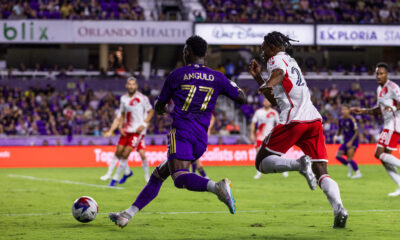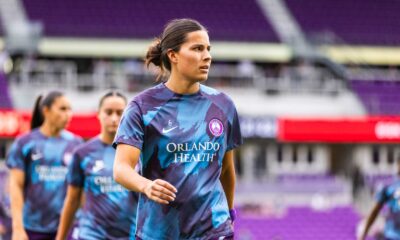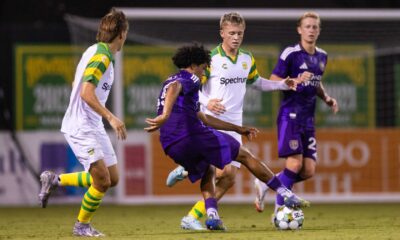Orlando City
Orlando City vs. Atlanta United: Final Score 0-0 as Lions Open Season with Another Draw
Lions generated some good chances on opening day, but just couldn’t get the last touch quite right.
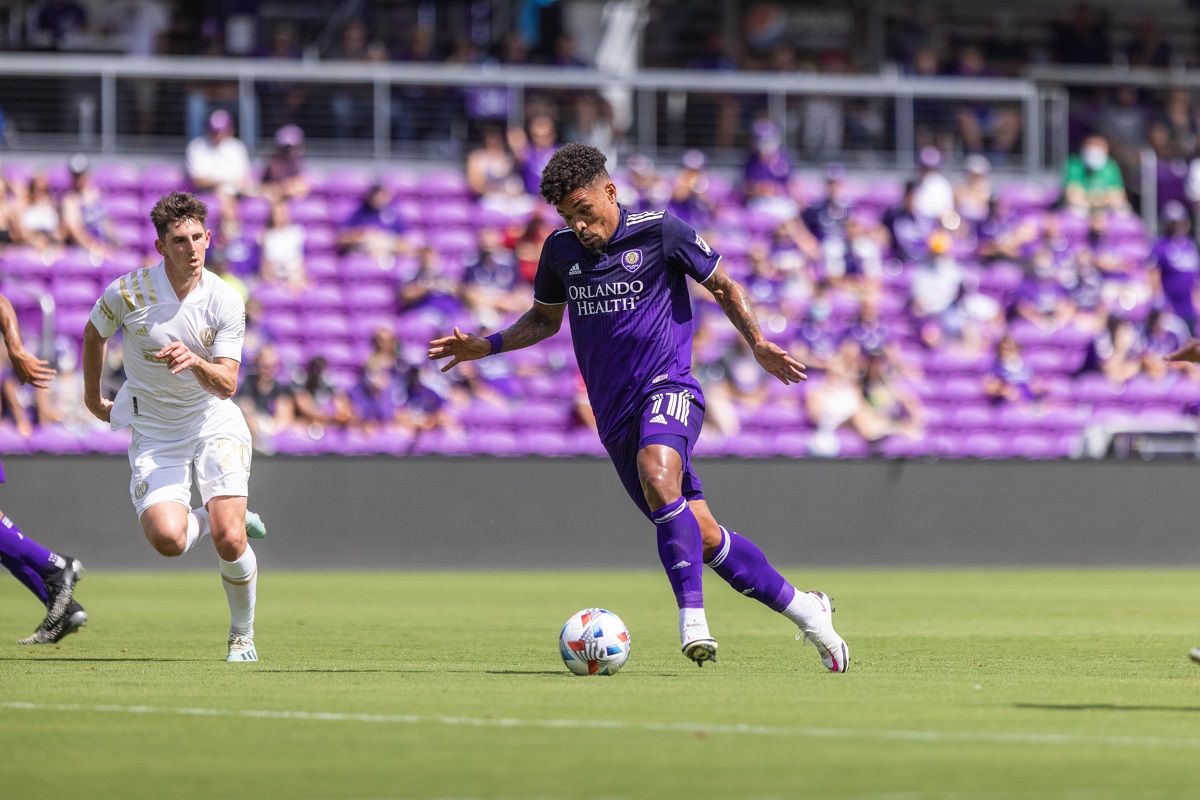
Orlando City generated better opportunities in a defensive struggle on opening day against Atlanta United, but ultimately had to settle for a 0-0 draw at Exploria Stadium. The Lions drew on opening day for the sixth time in seven years, with the only non-draw coming 2017 when they beat New York City FC in the first game ever at Exploria.
With the draw, Orlando is unbeaten in its last five games against Atlanta United, and is now 2-6-5 (W-L-D) in the all-time series in league play and 2-7-5 in all competitions. Orlando City starts the season 0-0-1 yet again.
“Good match. It was back and forth,” Head Coach Oscar Pareja said after the match. “In the second half, I think we had more balance. In the middle we started just creating more numerical superiority and I did like the team. But the game was intense. We found a good team in front of us and we’re going to take the point and start our season this way.”
Pareja did not have Uri Rosell or Robin Jansson (both have the dreaded lower body injury), so Pedro Gallese looked out at a back line of Kyle Smith, Rodrigo Schlegel, Antonio Carlos, and Ruan. Sebas Mendez and Junior Urso played central midfield, with Nani, Chris Mueller, Tesho Akindele, and Alexandre Pato as attacking options.
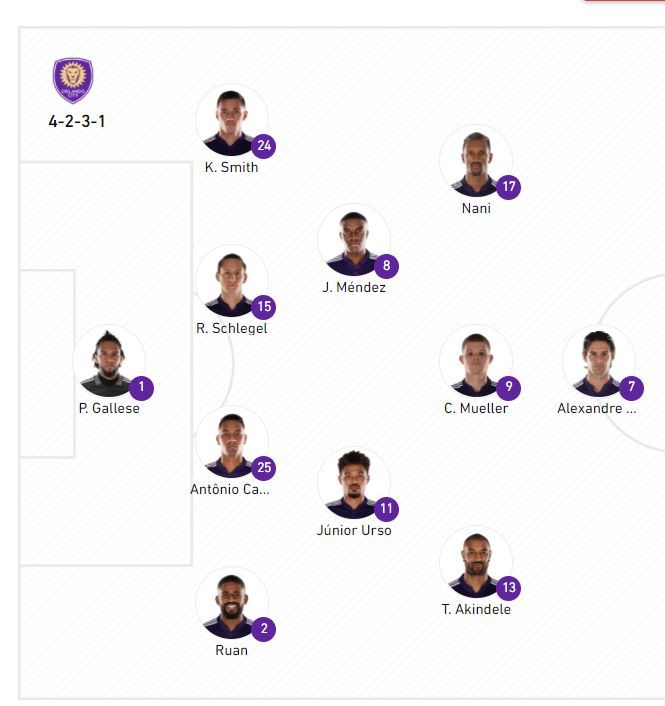
The first half looked like a typical opening game. There were good passages of play but things broke down when players tried to read the game and thread passes in tighter spaces in the final third. There were fouls on both ends that Jair Marrufo let go, which perhaps prevented some chances as well, as the veteran referee was not in the mood to blow the whistle early in this one.
Orlando got an opportunity 15 minutes in when Urso was sent into the box but he took an extra touch and that allowed the defense to knock the ball away for a corner. Four minutes later, Ruan cut inside and had a shot blocked which would have fallen to Mueller had he not been knocked down. Marrufo wasn’t interested in making a call. Urso fired well over the bar in the 25th minute as the Lions continued to lack sharpness in the final third, and link-up play with Pato too often seemed to be two players looking for something different.
Pato nearly got behind the defense in the 28th minute, but he had his run cut off just outside the box. Again, Marrufo wasn’t interested. Nani got the first shot on goal in the game when the Atlanta defense gave him too much space and his shot was headed inside the right post but Brad Guzan made the save.
Smith conceded a couple of free kicks after a bright start, allowing Atlanta a few set piece opportunities but nothing came of them. An Atlanta shot was deflected wide from the top of the box to set up a corner and the entry ball was headed wide by Marcelino Moreno.
Urso and Mueller each failed to get a header on target from set pieces as the first half wound down and the last good opportunity saw Jake Mulraney cut inside and fire a shot that Gallese saved comfortably on Atlanta’s first shot on target.
Atlanta had more shots (6-5), with each team getting one on target, won more corners (4-2), held more possession (59.1%-40.9%), and passed more accurately (88.5%-84.7%).
“The nerves were kind of there in the first half,” Mueller said. “It was, you know, pretty frantic. It was all over the place.”
Andres Perea came on for Akindele after the halftime break and Orlando looked more fluid in the attack. Atlanta continued to have more of the ball, which was fine with the Lions, who did a good job of keeping everything wide and preventing the visitors from generating much of a threat.
Perea’s first touch nearly opened the scoring. Mueller centered a pass to him and Perea fired but his shot was straight at Guzan, who made the save. Moments later, Ruan zigzagged down the right side and won a corner. Carlos got his head to the cross but hit it straight down and it bounced wide of goal. Perea then tried to pick out Pato in the box in the 51st minute but the Atlanta defense was able to knock it away before it could find the Brazilian.
“In the second half we (were) much more balanced in the middle,” Pareja said. “We need a player who can mix the energy there, who can bring us some legs too. Andres knows how to do it. He has a lot of glue, he has a lot of range, and we needed to stop his number five (Santiago Sosa), who is a key player for them and Andres did that job. So we cut that connection and we started increasing ours, and stretching Pato as the number nine as well. It just gave us some space and more creativity in that part of the field, and that’s that’s why we created the best options in the game.”
Atlanta’s first look came in the 57th minute when George Bello jumped into the play and got into the box. Schlegel came over to pressure him and the fullback’s shot went wide.
Mendez nearly got in alone in the box three minutes later but Guzan came off his line to smother the ball first. Two minutes later, Orlando nearly scored. The ball was pinging around with Pato and Mendez in front of goal, and it was the midfielder who ended up trying a spinning shot but he hit it wide. Had Pato been able to get there instead it was likely a goal.
Both teams started substituting between the 60th and 75th minutes, trying to find an edge to take control of the game. Benji Michel came on for Nani on the Orlando side.
The Lions came closest to scoring in the 72nd minute, when a cross from Mueller on the left found Pato in the middle. The Brazilian shot with his first touch and his attempt came off a defender and then hit the outstretched arm of Guzan, who scrambled on top of the rebound as it was rolling toward the goal line.
Pato went down with an injury in the 78th minute on a play without contact. He jumped to avoid what could have been an absolutely devastating tackle at the top of the box and went down after he landed, holding the back of his knee. He was able to walk off under his own power but was forced out of the game, making way for Silvester van der Water’s MLS debut.
“Good game for Alex,” Pareja said of Pato’s debut. “That commitment that he has with his team. He tried to create from that zone where we put him in the first half. I think we could find those spaces and then he is very crafty with the ball and created some chances for us. Second half as well, when we stretched him as a number nine. We had the best of him, put him in front of the goal twice. The doctors will evaluate what happened. We don’t have the diagnosis yet.”
Josef Martinez came on for Atlanta but didn’t do much. He did get onto a set piece but headed it well wide of goal on the last decent look for either side. In the end, the two southeast rivals had to settle for a point apiece.
Each team fired 11 shots and got three on target. Atlanta held more possession (59.7%-40.3%), had more corners (4-3), and was more accurate in passing (88%-82.2%).
“I think it was good to get back out there and try and catch some of our rhythm,” Mueller said. “I think it was obviously difficult conditions, just with the heat and everything. I think that we lacked a little bit of quality moving forward and in our positioning. I think that it would be really helpful for us to look at the film and see the areas where we can improve for next week, but overall it felt nice to get back out there and get some minutes under our legs and we’re definitely looking to build on that moving forward.”
The Lions will head out on the road for their second game, traveling to face Sporting Kansas City next Friday at 8 p.m. ET.
Orlando City
Orlando City vs New England: Three Keys to Victory
What do the Lions need to do to score some goals and secure a victory against New England?
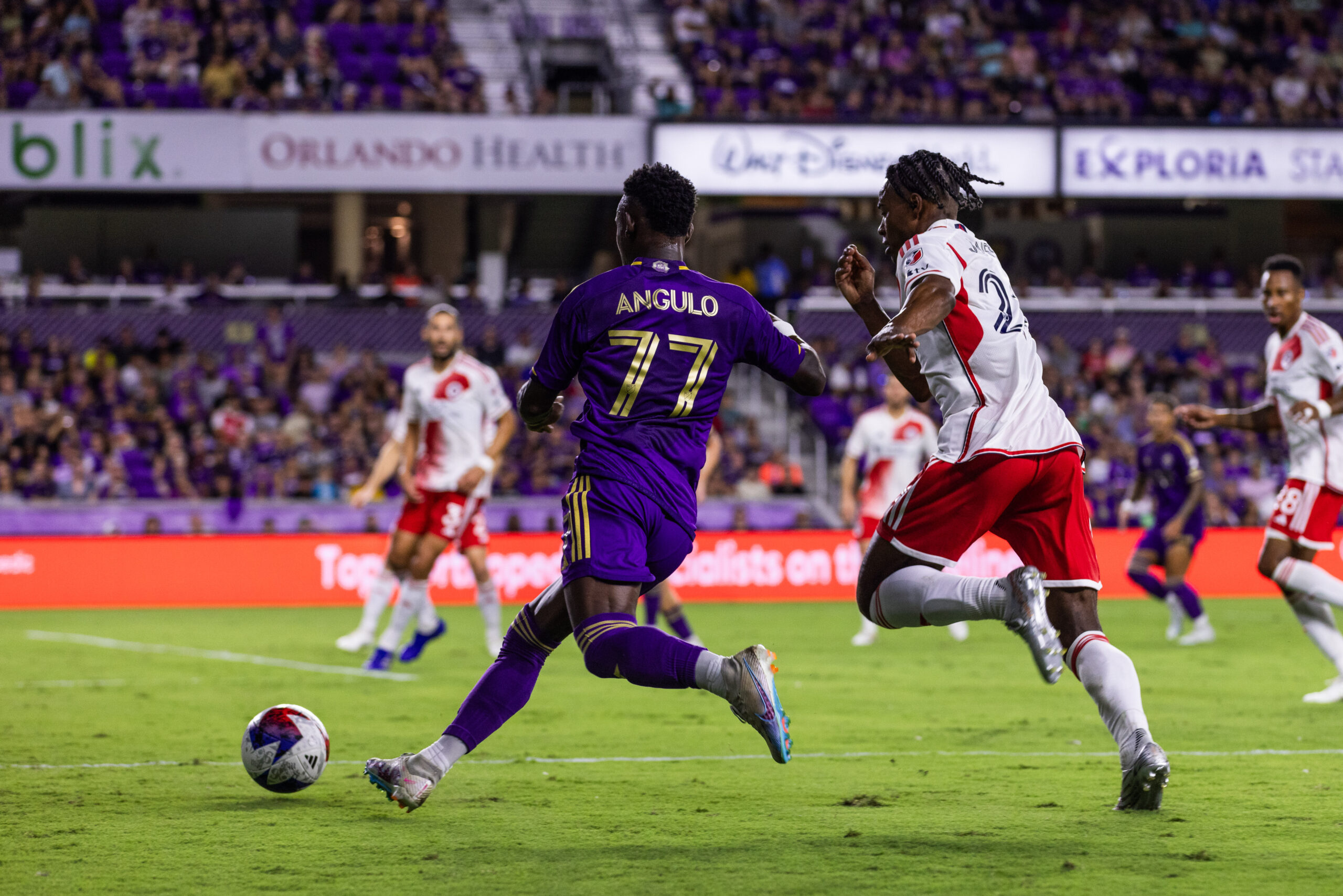
Orlando City might have the scoring woes in MLS matches as of late, but the Lions broke out against the Tampa Bay Rowdies Wednesday night in the U.S. Open Cup match. Of course, the Rowdies are not a very good team this year and are not a top flight team, so take it all with a grain of salt. What does Orlando City need to do to earn all three points at home against the Revolution?
Stop Gil/Campana
New England has scored eight goals this season. Seven of those goals have come from Carles Gil (5) and Leonardo Campana (2). Gil has also contributed one of New England’s four assists on the season. The vast majority of the Revolution’s offense goes through these two players, meaning stopping the duo is priority number one.
I fully expect Oscar Pareja to field his first-team defense, including a back line of Alex Freeman, Rodrigo Schlegel, Robin Jansson, and David Brekalo. Orlando City will also need whoever is playing in the defensive midfield to be the first line of defense. Pedro Gallese cannot be expected to have eight saves every match. The defense needs to step up.
Streak vs. Streak
Orlando City is on an eight-match unbeaten streak. New England is on a four-match winning streak in league play and five in all competitions. One of these streaks will end Saturday night. The Revolution have scored six goals in the last four MLS matches with at least one goal in each match without conceding a goal during the streak. The Lions have only scored three goals in the last five MLS matches with all three coming in one match against Atlanta United. Orlando City has shut out five straight MLS opponents and six consecutive in all competitions.
Orlando City has given away too many points during the unbeaten run. The Lions have missed Eduard Atuesta’s ability to create opportunities for his teammates to score. I’m hoping he will be available, but if not, Pareja will need to figure a better adjustment than he has in previous matches.
No More Nil
Orlando City may be on an eight-match unbeaten streak, but the offense has been absent in four of those matches. In those 0-0 draws, Orlando City took 53 shots with only 12 on target (23% rate). Contrast that with the four matches in which they scored, when Orlando City took 68 shots with 25 on target (37% rate). The Lions will need as many chances as possible given New England has only allowed seven goals so far this season. This is a defensively solid team.
Marco Pasalic did not play in the Open Cup victory over the Tampa Bay Rowdies, meaning he will be well rested and ready to start scoring goals again. He seemed to be dialing in during the Chicago match but he was taken off before he could convert. I want him to pick up where he left off, so he and many others can score goals against the Revolution. Hopefully, the goals scored against the Rowdies will kickstart the offense.
That is what I will be looking for Saturday night. Let me know your thoughts in the comments below. Vamos Orlando!
Lion Links
Lion Links: 5/8/25
Orlando City steamrolls the Tampa Bay Rowdies in I-4 Derby, Orlando Pride aim to bounce back, U.S. Open Cup results, and more.
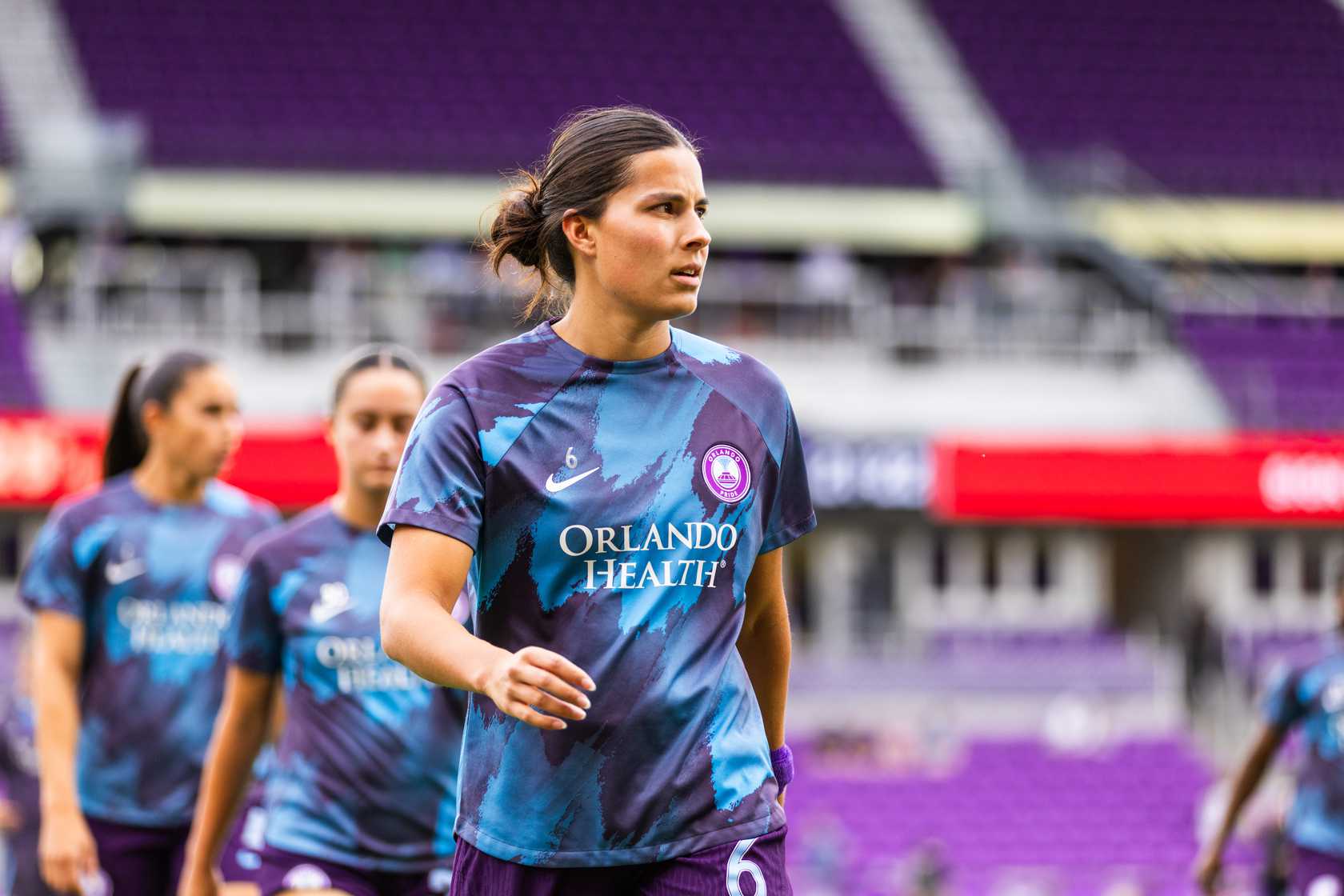
How’s it going, Mane Landers? It’s not often we get to celebrate an Orlando City victory in the middle of the week these days, but hopefully it’s a habit we get used to. The Lions took care of business in my neck of the woods, and it’s given some nice optimism to finish this week strongly. Let’s dive into the big win and more in today’s links!
Orlando City Trounces Tampa Bay Rowdies
Take a bow, Gustavo Caraballo! The 16-year-old was the star of the show in Orlando City’s dominant 5-0 U.S. Open Cup win against the Tampa Bay Rowdies, scoring twice to jumpstart Orlando’s attack and making history along the way. There’s plenty of scoring to enjoy, so be sure to check out our full recap!
Hopefully this game was a nice shot in the arm for Orlando’s offense and something to build on in league play. It’s always nice to take down the Rowdies and the Lions are now the last Floridian team standing in the tournament. They’ll host Nashville SC in the round of 16 later this month in what should be a good game in the City Beautiful.
Orlando Pride Aim to Bounce Back in North Carolina
After a 1-0 loss on the road to the Portland Thorns, the Orlando Pride will look to return to their winning ways when they face the North Carolina Courage on Saturday. It’s going to be another tough environment for the Pride to play in, although the Courage have lost two of their three home games so far this season. Pride defender Emily Sams spoke on the team’s mentality heading into this match and how the team can raise its level after a disappointing loss in Portland.
U.S. Open Cup Round of 32 Wraps Up
MLS teams mostly cruised in the U.S. Open Cup’s round of 32, but it was still an exciting round of soccer filled with drama. In a vintage “cupset,” the Pittsburgh Riverhounds beat New York City FC 1-0 thanks to a goal in stoppage time from Orlando native Beto Ydrach. Indy Eleven nearly took down the Philadelphia Union, but the MLS side converted all five kicks in the penalty shootout to advance after a 1-1 draw.
The New England Revolution escaped Pawtucket with a 2-1 road win against Rhode Island FC, with 17-year-old Cristiano Oliveira scoring a late winner. Minnesota United squeezed past Louisville City 1-0, the Chicago Fire put Detroit City to the sword in a 4-0 win, and FC Dallas won 3-1 against USL League One side AV Alta FC.
UEFA Champions League Final Set
Paris Saint-Germain did everything it needed to and more at home against Arsenal, winning 2-1 to advance to the UEFA Champions League final. Great saves by Gianluigi Donnarumma and goals from Fabian Ruiz and Achraf Hakimi propelled PSG to victory, with Bukayo Saka providing Arsenal’s only goal of the two-leg series. PSG will take on Inter Milan in the final on May 31 and it should be an interesting matchup at Allianz Arena to close out the tournament. Will PSG lift its first Champions League trophy only a year after Kylian Mbappe left the club, or will Inter come out on top after finishing as runner-up in 2023? I can’t wait to find out.
Free Kicks
- Congratulations to United States Women’s National Team star Mallory Swanson and her husband Dansby Swanson, as the couple announced that they’re expecting their first child!
- Racing Louisville announced that goalkeeper Katie Lund and midfielder Maddie Pokorny will both miss the remainder of the season due to hip injuries. Jordyn Bloomer, who had five saves in Friday’s win over the Houston Dash, will serve as the team’s goalkeeper in Lund’s stead.
- The Columbus Crew signed Daniel Gazdag to a contract extension through 2027, with a club option for 2028 as well.
- Arsene Wenger proposed a change to the offside rule so that attacking players are onside so long as any part of their body is lined up with the last defender. We’ll see if anything comes of this, but it could lead to more goals in the future.
- Here’s what to watch for in the second legs of the Europa League semifinals. Manchester United will host Athletic Club with a three-goal lead in aggregate, while Tottenham will aim to defend its two-goal advantage in Norway against a Bodo/Glimt side that has key players returning from suspension.
- Tottenham will be without James Maddison, who is out for the rest of the season after a knee injury sustained in the first leg against Bodo/Glimt.
That’s all I have for you this time around. I hope you all have a wonderful Thursday and rest of your week!
Orlando City
Orlando City vs. Tampa Bay Rowdies, U.S. Open Cup: Final Score 5-0 as Lions Roar Past Rowdies
The Lions destroyed their I-4 Derby rivals at Al Lang Stadium, advancing to the U.S. Open Cup Round of 16.
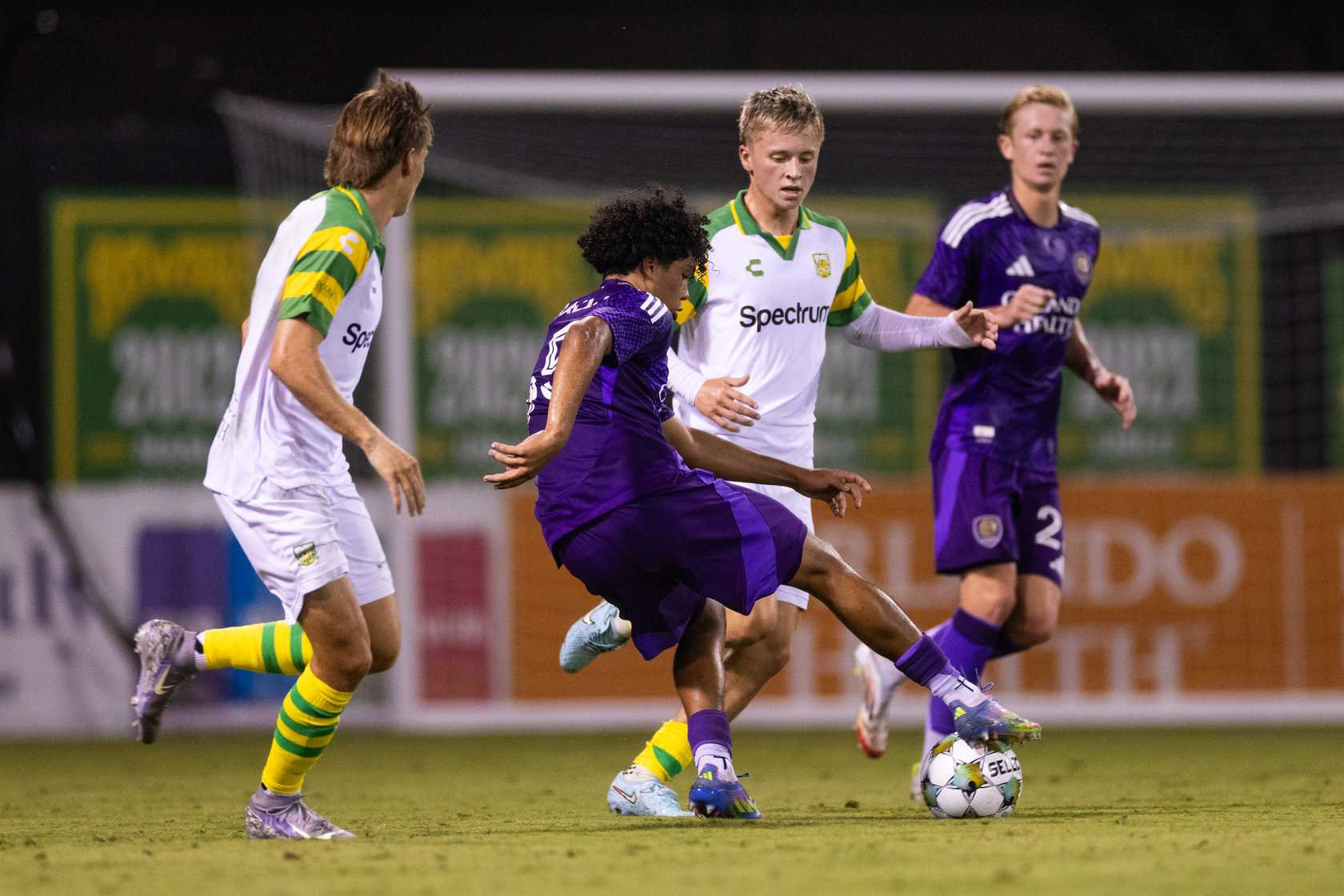
The Lions found their scoring boots tonight at Al Lang Stadium in St. Petersburg and spent much of the 90 minutes applying those boots to the backsides of the Tampa Bay Rowdies. Gustavo Caraballo’s brace led Orlando City, with Ramiro Enrique, Duncan McGuire, and Dagur Dan Thorhallsson each adding a goal in a comprehensive road victory.
On the other end, Orlando allowed the host Rowdies very little, keeping the team’s sixth consecutive clean sheet in all competitions, although this one was backstopped by Javier Otero rather than Pedro Gallese, who sat on the substitutes’ bench.
“I think scoring today was so healthy for us,” Orlando City Head Coach Oscar Pareja said after his team’s five-goal outburst. “The first objective was trying to keep the pace that we had defensively on being solid, but at the same time, and just move on to that team that is scoring again. So we’re happy in that part, and in between the boxes, we played a good game. We saw the youngsters playing, some of the other players that were not regularly in the lineup, so it was very complete.”
Pareja’s lineup was heavily rotated from the side that played Saturday in Chicago, with Otero starting in goal behind a back line of Rafael Santos, Kyle Smith, Rodrigo Schlegel, and Alex Freeman. Cesar Araujo and Thorhallsson started in central midfield behind an attacking line of Nico Rodriguez, Martin Ojeda, and Caraballo, with Enrique up top.
It took Orlando City a while to get going, but once the Lions saw the ball in the net once, they looked dangerous for the remainder of the opening half.
Not much happened early for either side, other than some rough challenges by the Rowdies that were (eventually) punished by a single booking, but one in the opening moments to knock Freeman down while trying to get forward in transition would normally draw a yellow card.
Orlando’s first shot came in the ninth minute off a corner kick. The ball fell for Caraballo in the box and his shot hit a defender on the ground. Orlando players appealed for a handball, and it appeared the defender moved his hand on the ground up into the ball’s path, but referee Natalie Simon saw nothing wrong with it.
In the 13th minute, on what was probably the third bookable offense of the game by Tampa Bay, Simon finally showed a yellow card to Daniel Crisostomo for a hard challenge on Ojeda. Moments later, Araujo got his foot stomped on after releasing a pass but no card was given on a nasty challenge.
Enrique got into a good spot in the box in the 23rd minute and fired a shot that defender Forrest Lasso did well to block out for a corner kick. Lasso then cleared the ensuing set piece entry ball. Manuel Arteaga tried to catch Otero off his line from midfield after the clearance but the young goalkeeper wasn’t in danger of being beaten even if the attempt hadn’t been well off target.
Enrique’s flicked effort in the 26th minute was blocked by the defense, and an Ojeda attempt from a tight angle on the left in the 29th minute was well saved by goalkeeper Nicolas Campisi.
Tampa Bay got a rare shot in the 33rd minute from outside the area, but Schlegel blocked it at the top of the box. The ball sailed high into the air and served as catching practice for Otero.
Orlando City broke through a minute later. Ojeda took a good entry ball from Santos down the left and sent a low pass through the box. Caraballo got onto it and blasted it just under the bar to make it 1-0. It was the 16-year-old’s first goal with the first team, and he became the youngest player to score a first-team goal in a competitive match for Orlando City.
“It means a lot. I was able to rise to the opportunity that the coaching staff and my team gave me, and I was able to score in front of all the friends that came a long way to see us play and see us getting that very much important win to send us off to the next round,” Caraballo said.
“Congratulations to Gustavo, to the coaches in the academy, to the program that we have,” Pareja said. “I think that they have done a tremendous job on developing these kids and putting him in the first team for us is a privilege. And not just that, but to see those performances in a kid that is so young, still.”
Caraballo doubled the lead two minutes later. A takeaway in the attacking third ended up on Thorhallsson’s foot. The Icelandic midfielder cut across the box left to right. Just when it seemed he would fire a shot toward goal, he sent a diagonal pass to his right for Caraballo to run onto. The young midfielder slotted his shot just inside the left post to make it 2-0 in the 36th minute.
“I saw that there was space, that the left back wasn’t there, and if I attacked that space, I would be able to get the ball,” Caraballo said. “Thankfully, Dagur was able to see me and (it was) just a normal finish that we practice every day. And I’m just glad I was able to finish it.”
The Rowdies tried to pull one back in the 40th minute. Otero went up to catch a cross from his left and was barrelled over by Arteaga. Otero spilled the ball into his own net, but the whistle had gone for the obvious foul. A minute later, the Rowdies appealed for a penalty when a player went down in the box under contact, but Simon again wasn’t buying it.
Enrique made it 3-0 in the 42nd minute. Araujo sent a beautiful ball over the top that fell perfectly for Santos’ well-timed run. The Brazilian fullback slid a centering pass in front at the top of the six and Enrique flicked it through Campisi and in for the Lions’ third.
The last look of the first half was another good one for Orlando. Santos was sent down the left by Thorhallsson and was in a good position to shoot. The fullback sent a cannon shot over the bar from the left in stoppage time.
The Lions took their three-goal lead into the break. Orlando held the halftime advantage in possession (57.9%-42.1%), shots (9-3), shots on target (4-0), and corners (4-1).
“We needed to be patient just to open the first goal, or to get that first goal, and we scored in the right time, I think,” Pareja said of the team’s final 15 minutes of the half — between the hydration break and halftime. “I think in that moment we pushed the pedal and the other two goals came. But if there is one thing I said about what changed, it was that we moved the ball faster, and the dynamic that the boys had to connect that helped us just to land in the box with more numbers and with more options to score.”
With the three-goal lead, Pareja withdrew Ojeda and Freeman from the lineup before the restart, sending on Duncan McGuire and Colin Guske.
The second half, perhaps as a result of Orlando’s subs and a couple by the Rowdies, was disjointed just after the restart. Tampa Bay was able to stay on the ball a bit more.
Still, the first good look of the second half came in the 57th minute and was created by the Lions. Caraballo fizzed a good cross into the box that found Enrique. The Argentine sent a flicked header on goal, but Campisi made a good save.
The Lions added a fourth two minutes later anyway. McGuire headed down a ball from the back to Rodriguez on the right. The Colombian sent a good return ball over the top for McGuire, who used his strength to hold off his defender before blasting his first goal of the season past Campisi to make it 4-0 in the 59th minute. The pass was Rodriguez’s first assist as a Lion.
“Duncan has been in that long recovery process that he had on his shoulder, and just seeing him now getting his rhythm and his best version and scoring is so healthy for our team,” Pareja said. “And Ramiro similar, too.”
Tampa Bay started to create some half-chances past the hour mark, shortly after both teams had made more substitutions. Orlando withdrew Araujo and Schlegel, replacing them with Zakaria Taifi and David Brekalo.
The first decent look of the half for the Rowdies came in the 67th minute. Woobens Pacius received the ball at the top right corner of the Orlando box and made a good turn, firing a shot for the near post. Otero had the post covered and made a comfortable save.
After the second-half hydration break, the Rowdies put a couple of decent shots on goal but couldn’t beat Otero. The first of those came in the 78th minute from Alexander Rodriguez from the top of the box on the right. The shot had a lot of power on it, but Otero fought it off. A minute later, Smith and Santos were caught up the field, allowing Ollie Bassett to sneak in down the right. He took a pass and blasted a shot that Otero saved.
The Lions had a golden opportunity to add a fifth goal in the 86th minute. Colin Guske intercepted a pass near the top of his own penalty area and dribbled forward in transition. He did well to pick out Enrique making a run slightly right of center. The Argentine carried the ball into the box with McGuire on his left all alone. Enrique slowed and cut back to his left, firing a shot wide of the left post.
Thorhallsson capped the scoring in the 90th minute, getting onto a pass from late substitute Ivan Angulo in the semicircle just outside Tampa Bay’s penalty area and blasting a shot just inside the left post to make it 5-0. It gave Thorhallsson a goal to go with his earlier assist.
After just one minute of stoppage time, Simon blew the full-time whistle on a dominant win over a struggling USL Championship side. The first 30 minutes were tightly contested, but the rest of the match was owned by Orlando City.
In the end, Orlando held the advantage in possession (57.2%-42.8%), shots (15-7), shots on target (7-3), corners (6-2), and passing accuracy (91.8%-89.4%).
“We’re really excited now to put our mind into the next one against New England at home, but today it was a game that we needed,” Pareja said.
The Lions improved to 8-0-0 in all competitions against Tampa Bay.
Orlando City moves on to the Round of 16 to host Nashville SC with a date and time to be announced, but the window for that round is May 20 and 21. The Lions return to action at home Saturday against the New England Revolution.
-
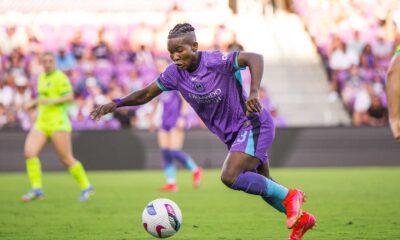
 Orlando Pride2 weeks ago
Orlando Pride2 weeks agoOrlando Pride vs. Angel City FC: Preview, How to Watch, TV Info, Live Stream, Lineups, Match Thread, and More
-
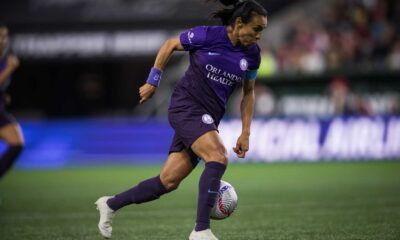
 Orlando Pride6 days ago
Orlando Pride6 days agoOrlando Pride vs. Portland Thorns FC: Preview, How to Watch, TV Info, Live Stream, Lineups, Match Thread, and More
-
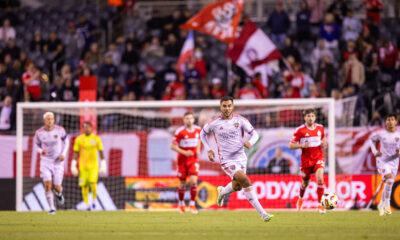
 Orlando City6 days ago
Orlando City6 days agoOrlando City vs. Chicago Fire: Preview, How to Watch, TV Info, Live Stream, Lineups, Match Thread, and More
-
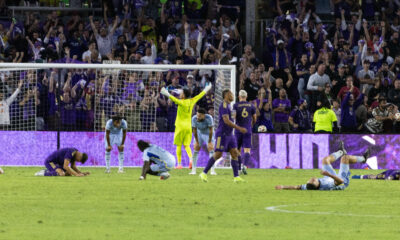
 Orlando City2 weeks ago
Orlando City2 weeks agoOrlando City vs. Atlanta United: Preview, How to Watch, TV Info, Live Stream, Lineups, Match Thread, and More
-
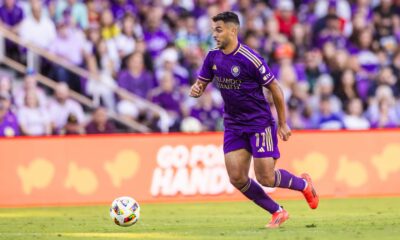
 Orlando City2 weeks ago
Orlando City2 weeks agoOrlando City vs. Atlanta United: Three Keys to Victory
-
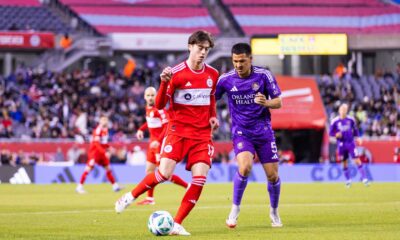
 Orlando City5 days ago
Orlando City5 days agoOrlando City vs. Chicago Fire: Final Score 0-0 as Lions Waste Points vs. 10-Man Fire
-

 Orlando City B6 days ago
Orlando City B6 days agoOrlando City B vs. Chicago Fire FC II: Final Score 5-1 as Chicago Scores Five Unanswered
-
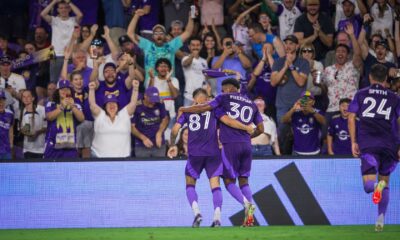
 Orlando City2 weeks ago
Orlando City2 weeks agoOrlando City vs. Atlanta United: Final Score 3-0 as Lions Rout Rival Five Stripes


